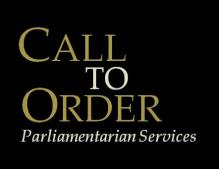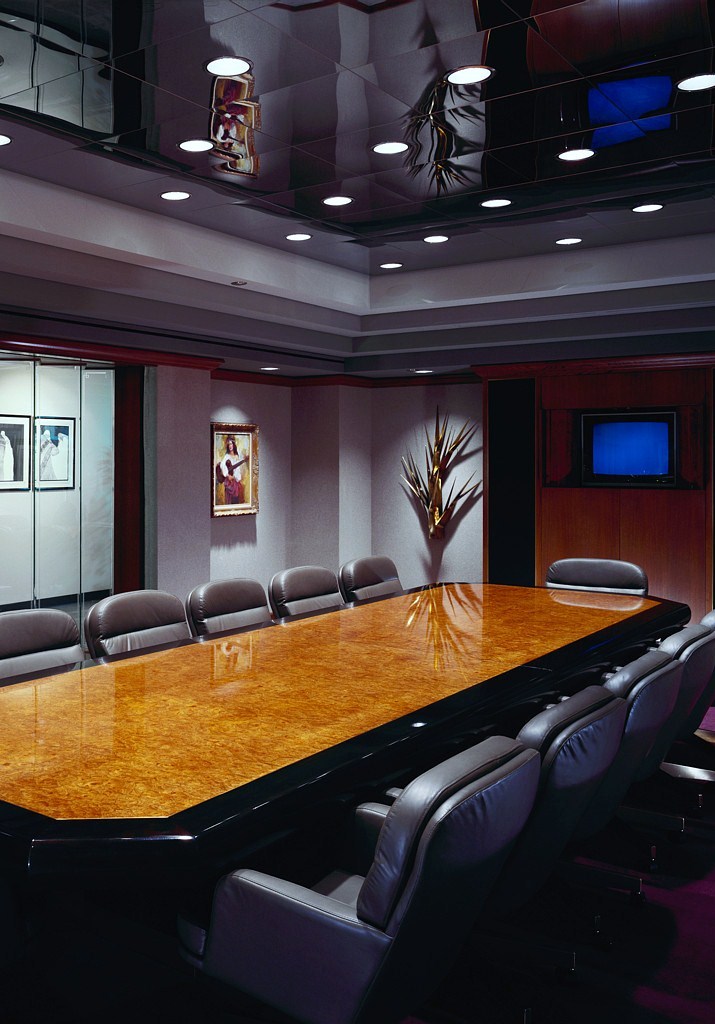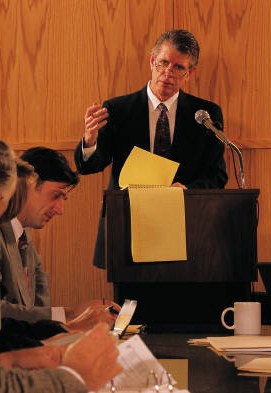In Mr. Smith Goes to Washington, the naïve Mr. Smith yields the Senate floor out of courtesy to a colleague, In doing so he loses his ability to debate on his legislation to prevent graft and corruption, Mr. Smith learned the hard way about the importance of knowing procedural rules. Officers and members of boards and and associations need to know the rules of order to achieve their goals and help their enterprises succeed. Our expertise includes:
- Meeting and Session Governance Services
- Presiding Officer Services
- Delegate Convention or Assembly Services
- Strategic Procedural Planning Services
- Bylaw Drafting, Review, and Revision Services
- Written Opinions Services
- Training Programs
Question: What does the "tabling a motion" do?
Answer: Imagine some members of an organization think it's a good idea to purchase two computers for its administrative offices. Such a question gets placed on the agenda and a meeting takes place. A member gets recognized by the President and states: "Mr. President, I move that the association purchase two computers for our administrative office." Another member seconds the motion, not being sure of the wisdom of the purchase but would like hear more about it. Debate ensues during which factions in support and opposition form. Someone from the opposition rises and is recognized by the President and says, "Mr. President, I move to lay the motion on the table." There is a quick second. Is this motion in order? Should this motion be admitted by the President who has the authority to rule the motion out of order?
By Robert's Rules of Order Newly Revised (RONR) the motion to lay on the table (often referred to as "tabling a motion") is called a subsidiary motion. Subsidiary motions assist an assembly get through its business as quickly as possible. All motions have a rank or order of precedence; the higher in the order a subsidiary motion is, the higher the priority it has in being taken up. The motion to lay on the table is the highest ranked subsidiary motion and that means that it must be taken up right away. Its purpose, according to RONR, is to set aside, lay on the table, a main motion or question (the lowest ranked motion) to allow a more pressing matter to be taken up. Therefore, it is not debatable, and only takes a simple majority to adopt. Because of its high rank, its undebatability, and its simple majority vote, it's fairly easy to get it passed. A motion that has been laid on the table may be taken from table to continue where it left off. There are, however, time limitations as to how long it may remain on the table before it dies.
Strategy: Methods to kill a measure.
Often times, opponents of a measure in a meeting will move to lay a question on the table. Because it has such a high rank, this motion is taken up right away. Because it is undebatable, no further discussion can take place either for it or against it. Finally, it only takes a majority to pass it.
The nail that closes the coffin is that it takes another motion to take it from the table, and there are time limits on how long it can remain on the table and still be taken from the table. Unless members of an assembly are familiar with this motion, they may assume the matter lost and not attempt to take it from the table before time expires to take it from the table.
A presiding officer who is familiar to the motion to lay on the table will not allow this motion unless there is a legitimately urgent matter that needs to be taken up. The fall back position (or the proper method) is to offer a motion to postpone indefinitely or to postpone to a certain time. Postpone indefinitely is the proper method for killing a measure, and postponing to a certain time, while not killing the motion, it puts the question off. The delay can be used to develop support for your position. This too has time limitations that, if unmet, the measure dies.
The Chair
The motion to lay on the table is likely one of the most misunderstood and misused motions. One reason is that not all manuals of parliamentary procedure are the same. For example, Riddick's Rules of Procedure states: "The motion to table as described here has the effect of killing whatever it is applied to, when adopted; it does not mean to lay a matter aside until it is taken up from the table again at a later time by the adoption-by majority vote without debate-of a motion." pp. 188-189. This is considerably different and is nearly the opposite of RONR.
To understand the motion to lay on the table properly, you must know the manual of parliamentary authority to know just exactly how an organization ought to use it. This must be known before presiding over any meeting just as a presiding officer must know the bylaws of the organization being presided over.
Most notably, the chair must look for the proper use of motions. If RONR is the parliamentary authority and the maker of a motion to Lay on the Table fails to identify an urgent matter, then the Chair must declare the motion out of order and not admit it. If the maker of the motion does identify an urgent matter, then the chair must admit the motion.

© 2011 Call to Order Parlimentarian Services
Let's Table It!


